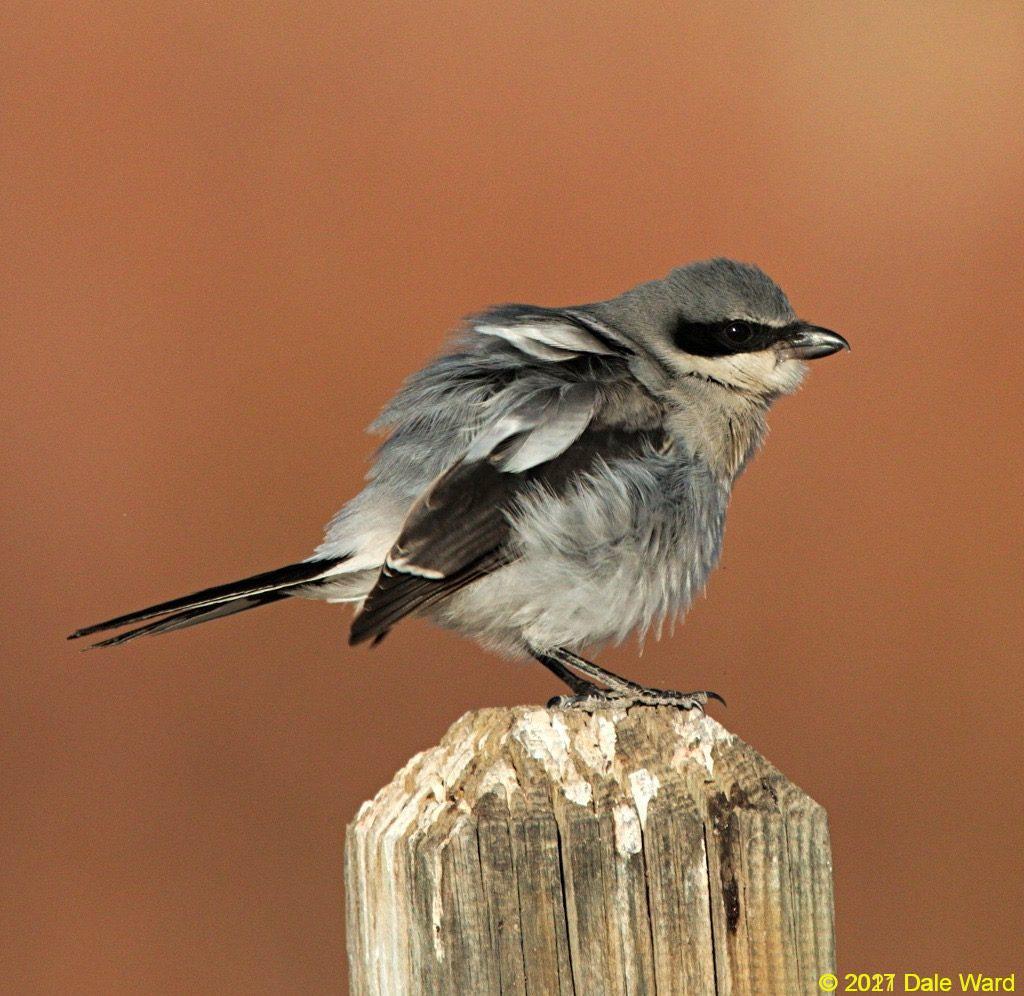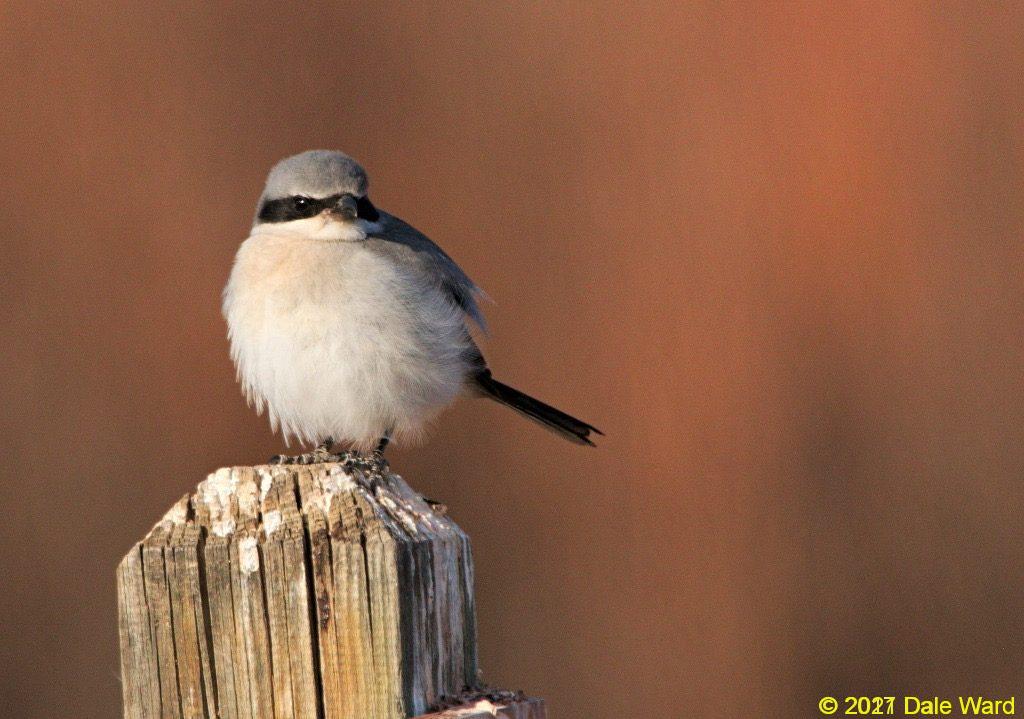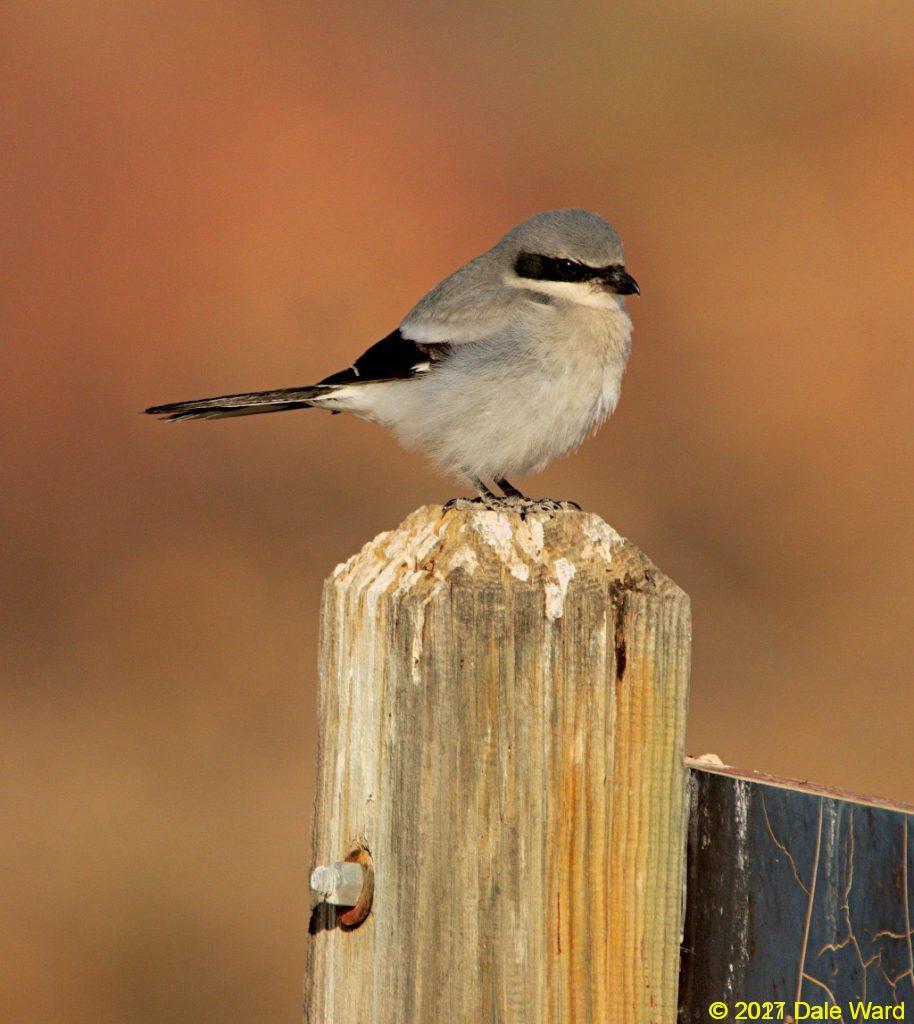Butcher Bird
Watching a Loggerhead Shrike at Bosque del Apache
 Loggerhead Shrike on a fence post, rousing to rearrange his feathers
Loggerhead Shrike on a fence post, rousing to rearrange his feathers
One of the neat birds I saw during my recent trip to Bosque del Apache was a Loggerhead Shrike.
Shrikes are passerines - perching birds, like sparrows - that are highly predatory. They eat insects, if they are available, but also regularly catch and eat birds, lizards and mice.
 Loggerhead Shrike at Bosque del Apache. I just love the colors in this picture.
Loggerhead Shrike at Bosque del Apache. I just love the colors in this picture.
Shrikes are, essentially, songbirds that behave like hawks. But Shrikes don’t have the heavily taloned, strong feet of raptors. Shrikes usually kill large prey by using their heavy, hooked beak to break their prey’s neck.
Shrikes sometimes impale their prey on sharp, pointed objects, such as thorns or barbed wire That’s how they got the name ‘Butcher Bird’. This impaling makes it easier for the Shrike to dismember tougher prey, making up for the Shrike’s un-hawk-like, relatively week feet.
If the Shrike catches more prey than it can eat at once, it may festoon the spikes with the bodies of its prey, forming a larder. I’ve not seen one of these larders, and am not sure if this is mostly a display for attracting mates during breeding season, if it it’s a general reaction to abundant prey, or both.
Who knows - maybe Vlad the Impaler was just stocking up for a hard winter, or looking for a date.
 Loggerhead Shrike at Bosque del Apache. Judging from the amount of whitewash on the fence post, I’m guessing this is a popular spot for this bird
Loggerhead Shrike at Bosque del Apache. Judging from the amount of whitewash on the fence post, I’m guessing this is a popular spot for this bird
w
When they fly, Shrikes have similar coloration and patterns to Northern Mockingbirds - all blacks, and grays, and white. They have very different styles of flight, though. Shrikes tend to have a much more purposeful, less float-y flight.
When I lived in Idaho, it was pretty common to see Northern Shrikes, mostly in the winter. They were nearly as common as Kestrels, which were also very abundant on winter fence posts.
Shrikes are not as abundant here in the Southwest, so it was a real treat to have gotten such a good look at this one.